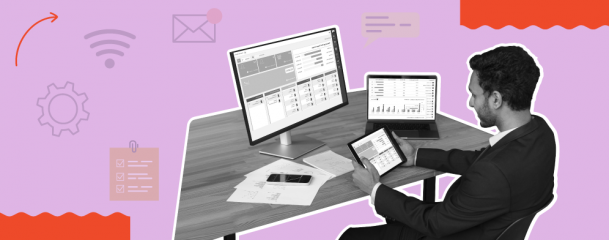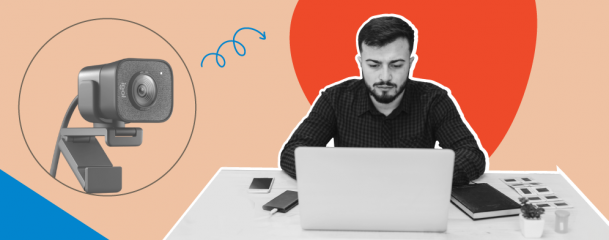1. What is Employee Monitoring?
Employee monitoring is a method through which companies track and observe the activities, behavior, and performance of employees during work hours. It includes the use of various tools, software, and technologies to monitor and collect data related to employees. This is done in both on-site and remote work settings.
The scope of employee monitoring is wide and covers aspects such as internet usage, email communications, phone calls, computer activities, location tracking, and even video surveillance.
2. Types of Employee Monitoring

2.1. Monitoring Internet Usage
Monitoring internet usage includes tracking the websites your employees visit, the time spent on each site, and how often they visit. Companies use web filtering software or network monitoring tools to gain insights into employees' online activities. This helps identify time-wasting behaviors, prevent access to unauthorized or inappropriate content, and protect the organization from security threats posed by malicious websites.
2.2. Tracking Email Communications
Companies can track their employee's emails, recipients, and the frequency of communication. This is done in order to ensure compliance with company policies, prevent data leakage, and safeguard confidential information from being shared externally. While it can help identify security breaches and improve communication efficiency, email monitoring must be handled with sensitivity to avoid undermining employees' trust and privacy concerns.
2.3. Monitoring Computer Activities
Another method of surveillance that is extremely prevalent especially when working remotely is the monitoring of computer activities. This includes looking at application usage, document access, and file transfers. It helps assess how time is allocated throughout the workday, identify potential inefficiencies, and enhance overall productivity.
2.4. Video Surveillance

Video surveillance aka CCTV is also a very common way to monitor employees. This of course is more applicable for employees working from the office. It involves strategically placing cameras to visually monitor employees' behavior. This helps enhance security, prevent theft, and ensure safety. As effective as this way of monitoring is, there are associated concerns with it as well. If not carried out properly this can end up feeling like spyware.
2.5. GPS Tracking
In this form of surveillance GPS tracking technology is used to monitor the location and movements of employees. Primarily used by companies where employees frequently travel. This method helps optimize logistics, ensure timely service delivery, and improve fleet management. However, it must be done with caution, as it can come across as intrusive.
3. Legal and Ethical Considerations When Adopting An Employee Monitoring Program
3.1. Employee Privacy Rights
Employees have a reasonable expectation of privacy in the workplace, and there are certain monitoring practices that can infringe upon these expectations. Monitoring employees' internet usage, email communications, computer activities, and other behaviors if not done with care can violate their privacy rights.
This is why it is important to establish clear and transparent policies regarding employee monitoring. Start with informing employees of the specific types of monitoring in place, the purpose behind it, and the data collected. Also, obtain explicit consent from employees to ensure that monitoring practices are conducted with their knowledge and consent.
3.2. Compliance with Labor Laws and Regulations
Different countries and regions have distinct labor laws and regulations governing employee monitoring practices. These employee monitoring laws dictate what types of monitoring are permissible, the extent to which you can monitor your employees, and the requirements for informing employees about monitoring activities.
As an employer, you must diligently research and adhere to these laws to avoid legal repercussions. Additionally, consulting with legal professionals specializing in employment and data privacy laws can help ensure that monitoring practices align with the local legal framework.
3.3. Ensure It Does Not Affect Productivity and Employee Well-Being:
While employee monitoring software can enhance productivity, it has to be implemented thoughtfully to prevent negative consequences on employee well-being and morale. Constant surveillance and overly intrusive monitoring can create a stressful work environment which can lead to a breakdown of trust between you and the employees.
To avoid this, it is important for companies to focus on using monitoring data as a means to improve work processes and identify areas for employee support and development.
4. Best Practices for Employee Monitoring

4.1. Transparency and Communication
Open and transparent communication is the cornerstone of a successful employee monitoring program. You need to clearly communicate to your workforce that monitoring is being implemented and explain your reasons behind it. This communication needs to take place before monitoring begins and whenever significant changes are made to monitoring policies.
By explaining the purpose of monitoring, addressing potential concerns, and outlining the benefits you can increase the level of trust and cooperation among your workforce.
4.2. Defining Clear Monitoring Policies and Guidelines
Establishing comprehensive monitoring policies and guidelines is essential to ensure consistency and fairness in the monitoring process. The policies should outline the types of monitoring that will be conducted, the specific activities that will be monitored, and the frequency of monitoring.
Additionally, the policies should clarify the objectives of employee monitoring, such as improving productivity, enhancing security, or ensuring compliance. By setting clear expectations and boundaries, you can mitigate potential privacy concerns and prevent misunderstandings.
4.3. Limiting Monitoring to Work-Related Activities
To respect employees' privacy and maintain ethical practices, employee monitoring should focus solely on work-related activities. It is important to avoid monitoring employees' personal communications. This includes their browsing habits unrelated to work, or any other activities that fall outside the scope of their job responsibilities. Since employees even on company time are allowed to have a personal life and unless it hampers their work employers need to give them some leeway,
By limiting monitoring to work-related activities you will end prevent the perception of excessive surveillance. This approach also aligns with legal requirements in many areas that prohibit monitoring of employees' private lives.
4.4. Data Security and Protection
Data security is essential when implementing employee monitoring software. The data collected through monitoring can be sensitive and potentially vulnerable to unauthorized access or breaches.
You should invest in robust data security measures, such as encryption, access controls, and secure storage systems, to protect monitoring data from potential threats. Regular data audits and security assessments also help identify and address vulnerabilities promptly.
5. FAQs
5.1. What is an example of employee monitoring?
One common example of what is employee monitoring is the use of software that tracks an employee's computer activities, such as websites visited, applications used, and time spent on various tasks.
 Interested in Virtual Team Building Events?
Interested in Virtual Team Building Events?





















